How to choose a toilet: a complete guide
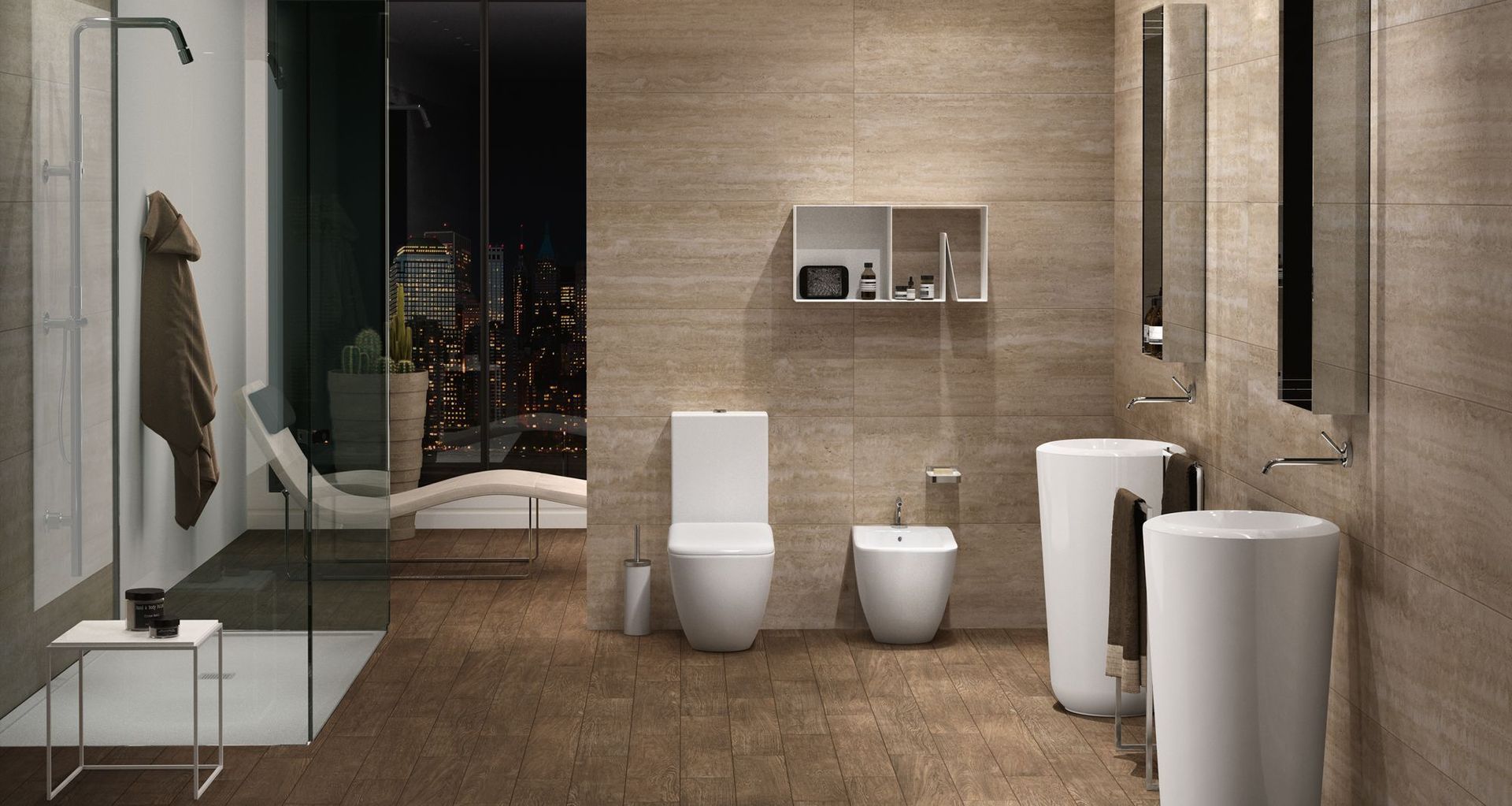
Toilets used to be purely functional bathroom features that would do one job and one job alone. These days, however, they offer so much more from both a practical and stylistic point of view. There have been some fantastic design innovations, in particular, and the emergence of specialised types of toilets for specific situations. Understanding what these are and how they work will help you decide how to choose a new toilet that offers everything you need and more.
The most common types of toilets
As mentioned, there are many different types of toilets on the market for you to choose from and we discuss some of the most prominent types below.
Close coupled toilets
Close coupled toilets are compact toilets that feature a closely-positioned pan and cistern. It is considered the traditional toilet and a reliable choice that has stood the test of time for decades all over the world. In most households in New Zealand, the existing toilet is a close coupled toilet.
Wall hung toilets
Aptly named, wall-hung toilets are hung from walls. They're mounted a few feet off the ground, with their pan components sitting flush against the wall's surface. Their cisterns are buried behind drywall, ensuring that they take up only minimal space.
These toilets are extremely easy to clean. Plus, the empty space below creates a visual illusion of space which is a great design trick to use to make smaller bathrooms feel bigger.
Back to wall toilets
Back to wall toilets are floor mounted toilets that are installed and sit flush against the wall. The impact of this is that the plumbing is more effectively concealed, giving a seamless look. Sometimes the cisterns are built into the wall but other times they are exposed or concealed in a frame.
They are robust and reliable and easy to clean but can be priced more highly than traditional close coupled toilets.

Different toilet materials to consider
Not only are there several different toilet types but many different toilet materials as well. These include:
Porcelain
Most toilet suites are made out of porcelain. This is because it's strong, resistant to corrosion, easy to clean, easy to shape, and aesthetically pleasing. In addition, it costs very little to use in the construction of a toilet and therefore keeps overall costs to a minimum.
Vitreous china
Another popular toilet material is vitreous china. This is a mish-mash of various clays. Like porcelain, it's strong, easy to clean, and resistant to corrosion. Generally speaking, vitreous china lasts longer than porcelain.
Steel
While nowhere near as popular as porcelain, steel is becoming more and more common as a toilet material. This is because it's strong, sturdy, lightweight, and resistant to corrosion. It also possesses a unique aesthetic that will undoubtedly stand out to anyone who comes across it.

Selecting the right toilet size
Toilets come in a number of different sizes and it’s important to choose one that fits well in your bathroom.
The toilet bowl on a round toilet usually measures 50 cm in length. The bowl on an elongated toilet usually measures 56 cm in length. Round bowls are better for small bathrooms, while elongated bowls are better for larger bathrooms.
As far as bowl height goes, it's usually between 36 and 48 cm. If you're of average or short height, this bowl height would probably suit you fine. If you're tall, or if you have trouble bending at the knees, you might better benefit from a 48 cm bowl height or greater. These are often known as comfort height toilets. With a wall hung toilet, you can set your own height, offering a bit more flexibility.
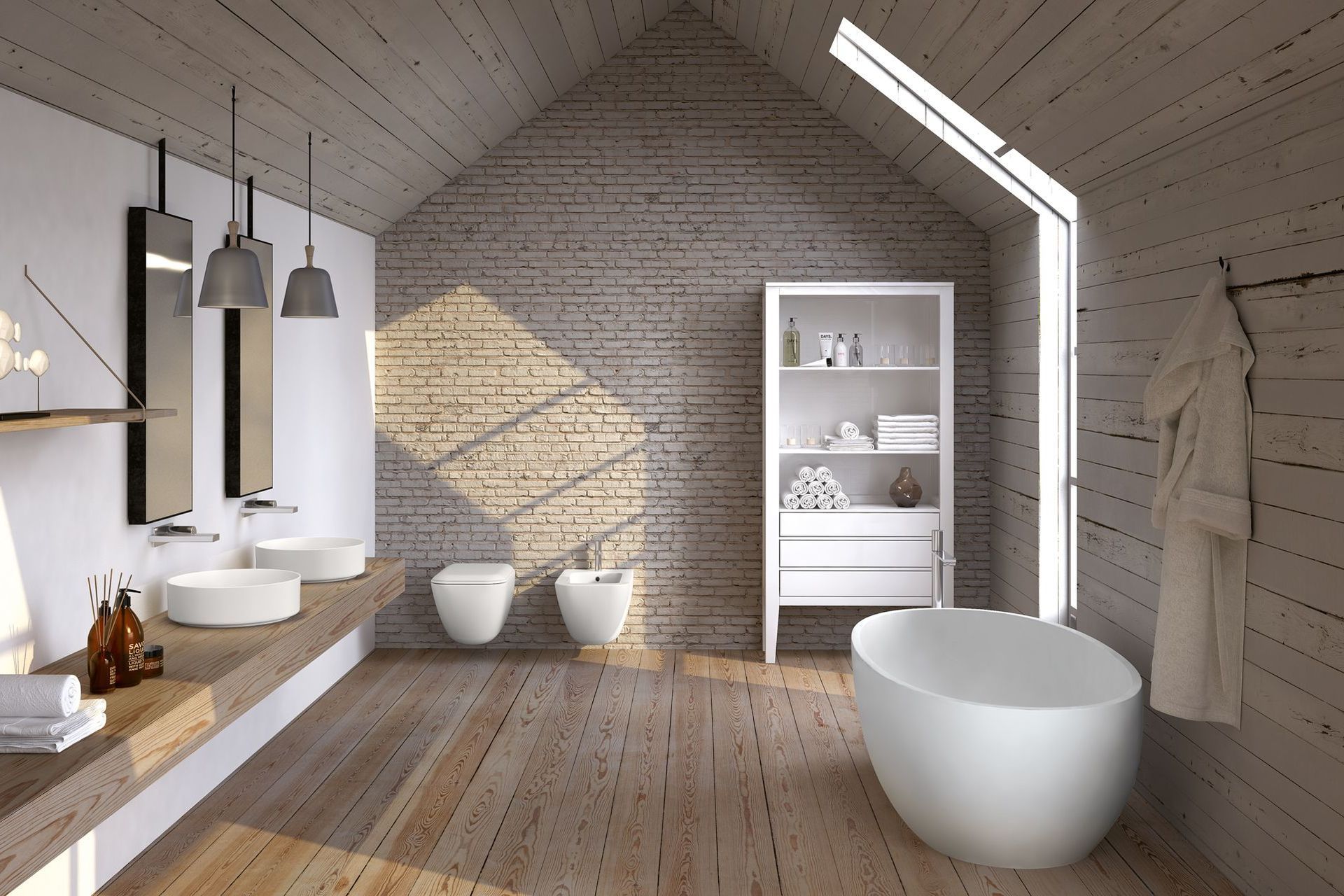
Understanding water efficiency ratings
These days, most single-flush toilets are made with 4.5L per flush. New toilets are labelled with a Water Efficiency Labelling Scheme (WELS) rating as an official credential for their water efficiency. This rating starts from 0 stars (average flush of 6L or more) to 6 stars (average flush of 2.5L or less).
However, there are also dual flush toilets which offer a full flush at 6.0L and a half flush at around 3.8L. This allows you to choose between flushing large and small amounts of water. These are fairly commonplace too and for many, it comes down to personal preference as the margins between them when used properly, are quite small.
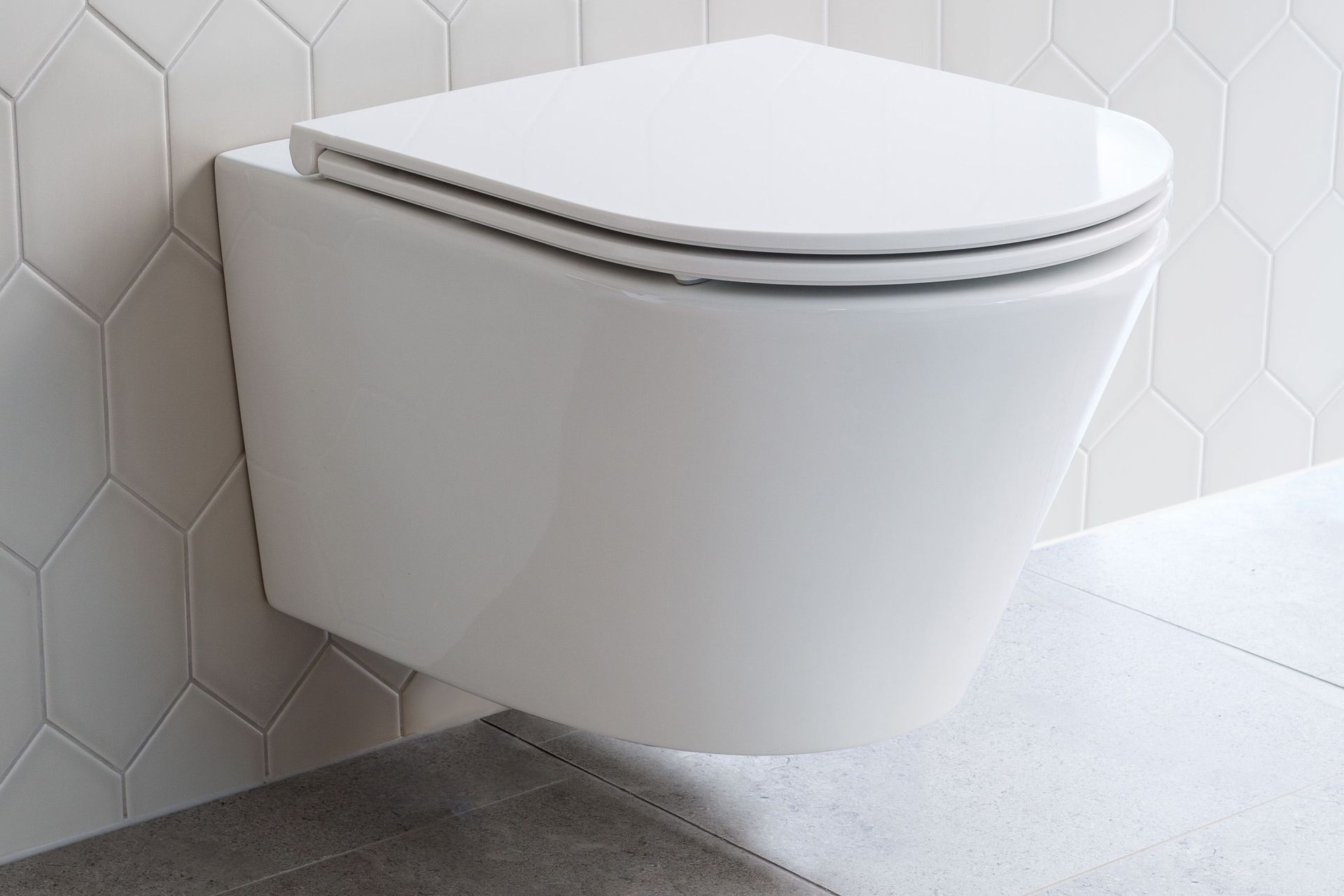
Innovations and features
There have been some great innovations in toilet design and technology culminating in an array of different features that you can consider when you go to buy a toilet. The sheer number of these is almost too exhaustive to cover here but a few examples can easily demonstrate what we’re talking about.
Common features vs unique additions
Some of these features, like soft close seats, have almost become standard and are things you really won’t want to do without. Others, like bidet attachments and smart technology that activate lights, warmers and other functions are more specialised, designed to add a level of luxury and convenience to the experience.
Design features
Some features are quite significant in design like rimless toilets, for example, which feature a toilet bowl without a rim, making it much easier to clean and therefore more hygienic. Instead of water coming from around the rim, it is pushed out from the top of the toilet in an ingenious way.
Pressure-assisted toilets are another example that offers an extremely strong flush, powered by a pressure vessel inside the cistern. These toilets typically use less water and require less cleaning, traits that are very appealing to many.
These are the types of additional offerings to look out for when you select a toilet as they can dramatically increase the functionality of your toilet as well as your comfort levels too.
Related article: Different types of toilet seats and when to use them
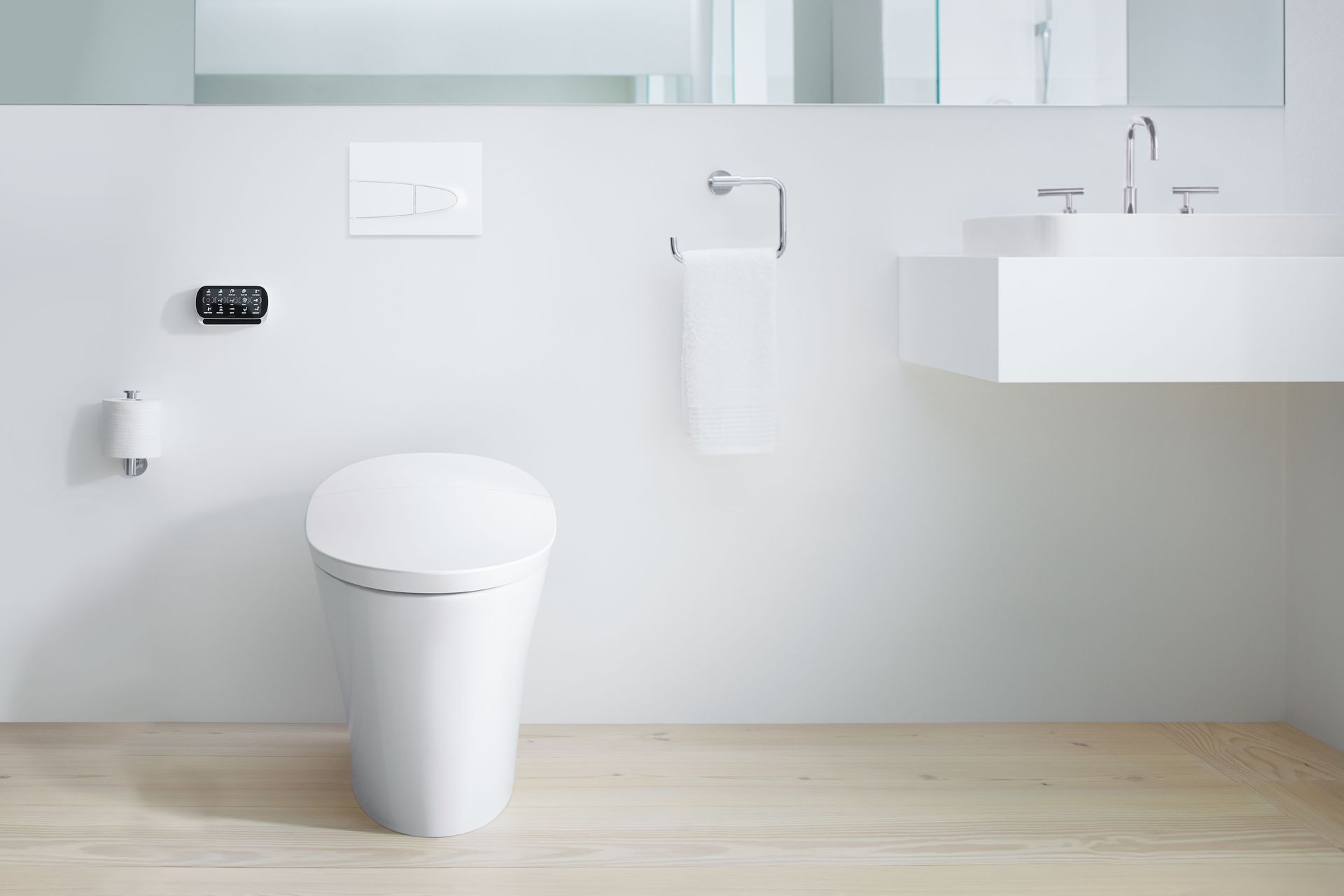
Styling, design and aesthetics
The look of a toilet didn’t use to be a significant factor but now people take aesthetics extremely seriously, especially when part of a new bathroom design or renovation. Manufacturers have responded too with some extremely elegant and sophisticated products to consider, across every price point.
Consider the bathroom environment
While styling is quite subjective, there are a few tips you can follow when thinking about what look to go for. The first is to think about the design of the bathroom and home as a whole. In most situations, you’ll want something that complements the styling you’re going for. For instance, a traditional, close coupled toilet may look out of place in a home with modern features and furnishings. The same would be true with the situation reversed.
A subtle addition or statement piece?
Secondly, you should also think about how much you want the toilet to stand out as a feature in your bathroom. There is a wide range of designs (and colours) to choose from with some having smooth lines for a more subtle touch compared to others that have more prominent elements that are meant to draw the eye.
Concealed parts and componentry
This also leads to the question, how much of the toilet do you actually want to see? As we’ve already covered, there are options like back to wall toilets and wall hung toilets that conceal key components of the toilet and plumbing which present a more clean appearance while saving space at the same time.
In saying all this, you should also trust your own eye and instincts when it comes to design. After all, it’s your bathroom and you’ll be the one who sees the toilet on a daily basis so it should appeal to you.

Pricing and costs
You'll, of course, want to consider the toilet's cost as well. Wall-mounted toilets are generally the most expensive, with back to wall toilets following, and then close coupled toilets being the least expensive. These come in at around $800, $500, and $400, respectively, though these are very general figures as luxurious and designer toilets, especially those with the latest technology like smart toilets, can easily exceed $1,000 and above.
Installation fees
You also need to consider installation costs. Different types of toilets have sometimes quite vastly different installation costs.
A traditional, close coupled toilet is generally the cheapest to install. This is because it doesn't require any mounting, nor does it require the water tank to be concealed behind any walls.
Wall-mounted toilets are usually the most expensive to install, as they need to be mounted with structural supports and their storage tanks need to also be concealed.
Related article: The cost of a new toilet in New Zealand: a buyer's guide
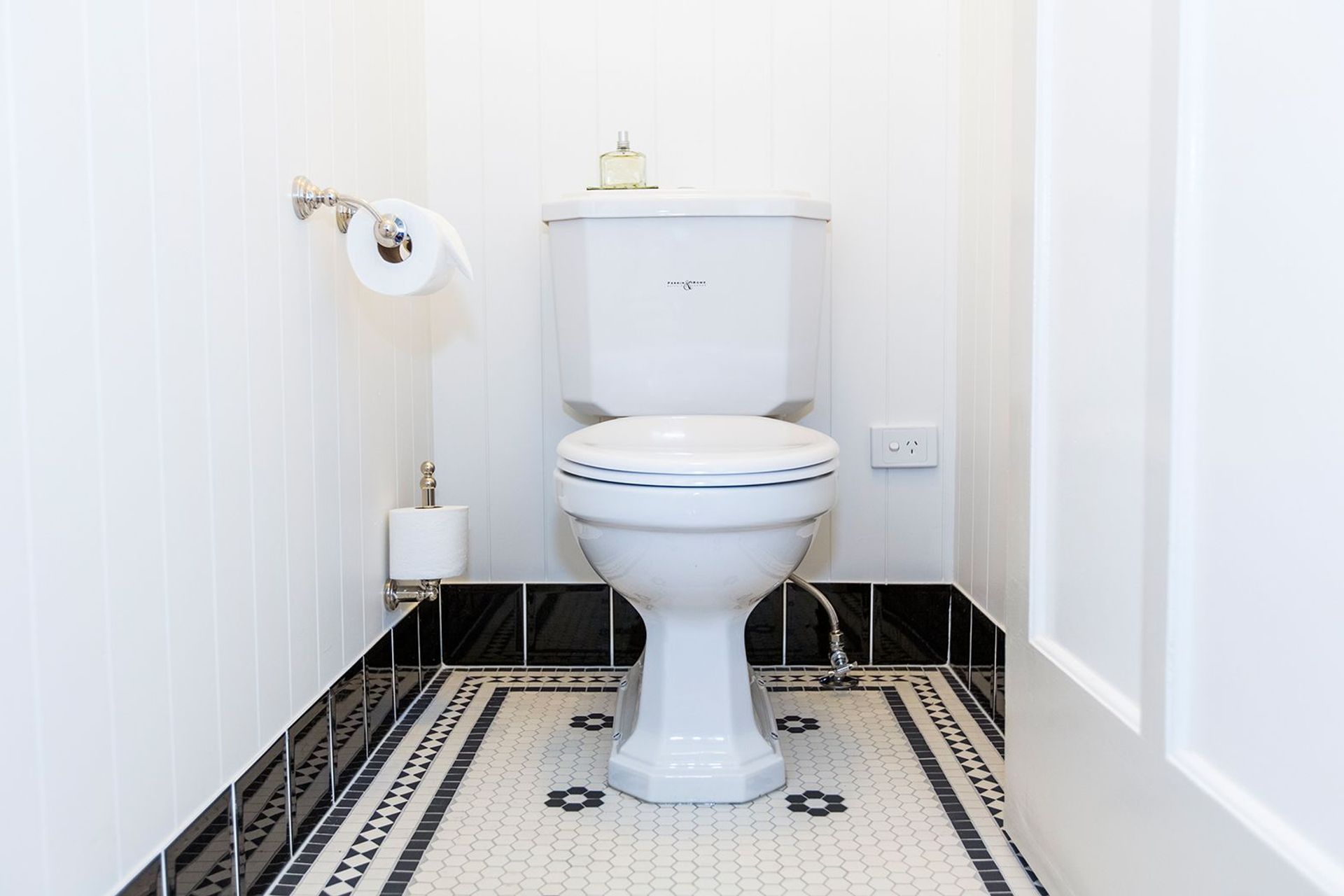
Other aspects to consider
In addition to the things we've already discussed, there are other aspects that you should consider before purchasing a toilet. They include:
Plumbing
When installing a toilet, you need to make sure you have the right plumbing configuration and the two most common types in New Zealand are the P-trap and S-trap.
A P-trap toilet has a pipe that resembles the letter “P” and works with the waste outlet connected to a curved pipe that extends down into the floor. This is typically used when the waste outlet needs to be at the end of the bowl.
An S-trap toilet has a waste outlet that is connected to a straight or slightly curved pipe that then extends down into the floor. It is preferred when the waste outlet needs to be located towards the centre of the bowl.
Maintenance needs
Generally speaking, it's just the bowls that require maintenance with toilets by way of cleaning. This is where the choice of toilet material has an impact with higher quality options often coming with special coats or finishes that make them easier to clean. They also tend to be more robust, giving you a greater overall lifespan.
However, from time to time, you'll need to access the toilet's water tank in order to replace or fix broken parts like flush valves, seals, gaskets etc. This is simple with a standard toilet but a little more complex with a wall-mounted or back to wall toilet, which may also require a specialist who knows those types of toilets well.
In essence, the simpler the toilet is and the better the materials, the easier it is to maintain.
Related article: The best toilets in New Zealand for modern and stylish homes
Everything you need to know about choosing a new toilet
And with that, we've comprehensively covered how to pick a new toilet. Feel free to go through each section of this guide individually and think carefully about which parts are most relevant to you. Once you have your preferences prioritised, you’ll find it much easier to create a shortlist of potential options with plenty of fine choices of toilets that will suit all your needs.
(This article was updated on 27th November 2024)
Discover an extensive range of stylish toilet suites on ArchiPro
